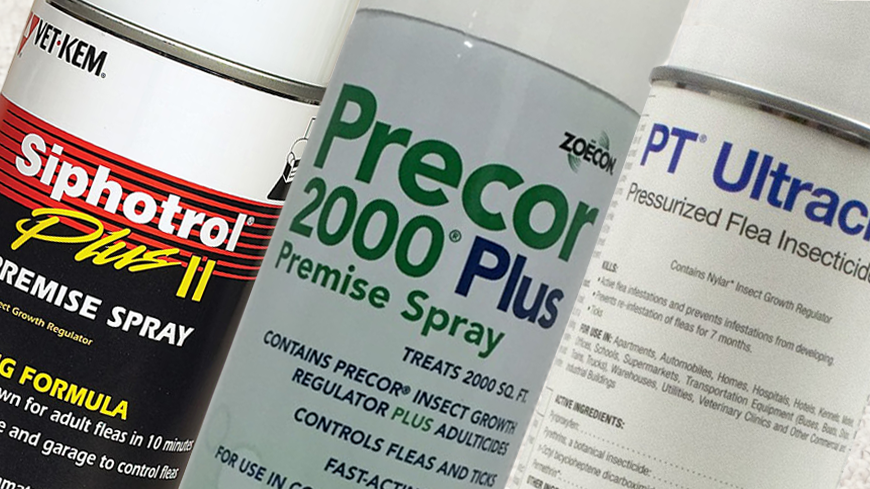
Summary
Eggs, larvae, and pupae make up 95-99% of flea infestations. These stages live off the host. In homes, most develop at the base of carpeting in rooms where pets frequently rest. A premise spray containing an insect growth regulator (IGR) is the best way to control immature fleas. The IGR will remain active and prevent re-infestation for 7 months.
Precor 2000 Plus
Precor 2000 Plus is comparable to its competitors, but is cheaper (may change).
The best flea spray for homes is Precor 2000 Plus. This premise spray is comparable to its competitors (Siphotrol Plus II, Ultracide, and Virbac Knockout E.S.). They all contain similar active ingredients, and in similar concentrations. Likewise, they’re all highly rated. What makes Precor stand out from the rest is its cheap price.
Comparison
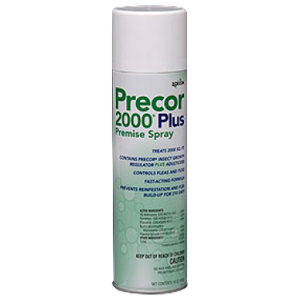 |
 |
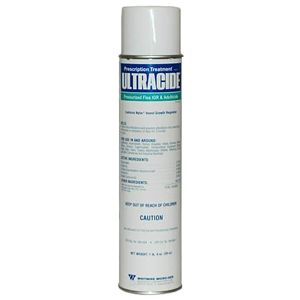 |
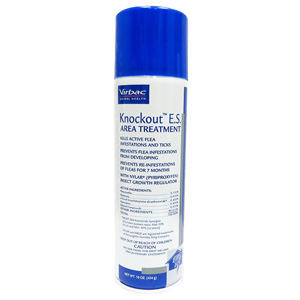 |
|
| Product Name | Zoecon Precor 2000 Plus | Vet Kem Siphotrol Plus II | Ultracide Professional | Virbac Knockout E.S. |
| Price | $16 | $21 | $27 | $27 |
| Size | 16 ounces | 16 ounces | 20 ounces | 16 ounces |
| Capacity | 2000 sq ft | 2000 sq ft | 2625 sq ft | 2100 sq ft |
| Application | Aerosol | Aerosol | Aerosol | Aerosol |
| Use On | Home Premises | Home Premises | Home Premises | Home Premises |
| Kills | Eggs Larvae Adults |
Eggs Larvae Adults |
Eggs Larvae Adults |
Eggs Larvae Adults |
| Active Ingredients | Methoprene Permethrin Pyrethrins Synergists |
Methoprene Permethrin Pyrethrins Synergists |
Pyriproxyfen Permethrin Pyrethrins Synergists |
Pyriproxyfen Permethrin Pyrethrins Synergists |
| A.I. Concentration | 0.085% 0.350% 0.300% 3.750% |
0.085% 0.350% 0.300% 3.400% |
0.10% 0.40% 0.05% 0.40% |
0.10% 0.40% 0.05% 0.40% |
| Duration | 7 months | 7 months | 7 months | 7 months |
| Product Label | ||||
| MSDS | ||||
| FleaScore | ||||
| Reviews |
- Prices are based on Amazon.com at time of publishing.
- FleaScores are based off of product details (price, size, active ingredients, etc), as well as reviews aggregated from 3rd party sources.
Details
Active Ingredients in Premise Sprays
Adulticides
Adulticides kill adult insects upon contact. In flea sprays, the compounds are often pyrethrins and pyrethroids. Pyrethrins are botanical insecticides derived from chrysanthemum flowers. They target the insect nervous system, causing paralysis and death. Pyrethroids are synthetic insecticides, whose chemical structures are adapted from pyrethrins. However, certain properties are modified, such as increasing their stability in sunlight.
Two pyrethroids often found in flea premise sprays are permethrin and phenothrin. Sometimes the active ingredient is listed vaguely as “pyrethrins”.
Synergists
Pyrethroids are usually combined with synergists. Synergists boost the potency of adulticides, resulting in a faster knockdown and longer residual effect. Thus, less insecticide can be used. This makes sprays safer and more economical, because synergists have a low toxicity profile and are relatively cheap. Synergists also act as solvents, which helps prevent aerosol valves from clogging.
Common synergists used in flea sprays are piperonyl butoxide (PBO) and N-octyl bicycloheptene dicarboximide (MGK 264).
Insect Growth Regulators
Insect growth regulators (IGR) are compounds which mimic natural insect hormones. While present, IGRs prevent genetic switches from being activated, so insects can’t transform into the next life stage. Flea eggs exposed to an IGR won’t hatch, or the larvae die upon hatching Exposed larvae can’t pupate. Exposed pupae emerge and die prematurely. And exposed adult females become sterilized.
Pyriproxyfen (Nylar) and (s)-methoprene (Precor) are the two most common IGRs used in flea control products.
How Premise Sprays Control Fleas
Killing Emerged Adults
Adulticides quickly kill any emerged adults in the environment. They won’t kill cocooned adults, but do help stimulate the fleas to emerge. That said, few adults will be in the environment at any given time. Adults only account for 1-5% of flea populations. And adult cat fleas are permanent parasites. They stay on their host once it’s acquired.
Killing Immature Fleas
The bulk of flea infestations (95-99%) consist of eggs, larvae, and pupae. Adults lay eggs on their host, but they’re not sticky and fall into the environment within a few hours. Most eggs accumulate and develop in areas where pets often rest.
Adulticides aren’t Effective
Adulticides have a limited effect on immature stages. This is because larvae move away from light. Most end up developing at the base of carpets. Carpeting is difficult to treat, because sprays can’t penetrate it well. Carpet fibers create a large surface area, which reduces the amount of active ingredient per unit area. The fibers also absorb and wick away the treatment, keeping it near the canopy. Additionally, over twice as much insecticide is needed to kill larvae compared to adults. Adulticides also have a short residual effect, only persisting in the environment for up to three weeks. Sometimes, the residual activity is so short-lived that adult fleas emerge 1-2 days after spraying and aren’t killed. Thus, sprays without an IGR don’t provide adequate control.
IGRs are Effective
Insect growth regulators are effective for environmental flea control because of their superior residual effect. IGRs remain active for 7 months indoors. Since insecticides can’t penetrate to the base of carpets where fleas develop, the long-lasting activity plays an important role in efficacy. New eggs that fall onto the treated surfaces won’t be able to reach adulthood. Thus, there will be no new generation of fleas to continue the infestation. In addition, IGRs reinforce the residual effect of adulticides they’re combined with.
The Best Flea Spray for Houses
Precor 2000 Plus
Precor 2000 is our pick for the best flea spray for homes. It’s similar to its competitors, but is cheaper (may change in the future).
Precor 2000 Plus by Zoecon is our pick as the best flea spray for homes. All four sprays that were reviewed have similar active ingredients and formulations. And, as you’d imagine, they’re all similar in quality and effectiveness, as evidenced by Amazon.com reviews. Thus, the distinguishing factor between the premise sprays is price. Precor wins as the cheapest, being up to $11 cheaper than its competitors.
The IGR used in Precor 2000 Plus is (s)-methoprene. Precor is the brand name given to this compound by Zoecon, who manufactures the active ingredient. Since the company produces the IGR used in their spray, it may explain why they can offer the best price.
Along with methoprene (0.085%), Precor 2000 contains permethrin (0.350%) and phenothrin (0.300%). These two pyrethroids have their efficacy enhanced by the synergists N-octyl bicycloheptene dicarboximide (2.000%) and piperonyl butoxide (1.750%).
Precor 2000 Plus is applied as an aerosol. It comes in a 16 ounce can, which is capable to treating a 2000 square foot area. One treatment controls fleas, ticks, cockroaches, ants, and other domestic pests for 210 days.
Good Flea Sprays for Houses
Siphotrol Plus II
Siphotrol Plus II contains the same active ingredients as Precor 2000 Plus, but is slightly more expensive.
Siphotrol Plus II by Vet Kem is nearly identical to Precor 2000 Plus. Both are 16 oz. aerosol sprays containing the same active ingredients. There’s only one difference in ingredient formulation: Siphotrol Plus II contains 1.400% piperonyl butoxide, instead of 1.750% in Precor.
Though virtually the same, Siphotrol Plus II is slightly more expensive than Precor, making it sit lower on our list.
PT Ultracide
Ultracide is similar to Precor 2000. The main difference is it contains pyriproxyfen instead of methoprene as the IGR. And the price is higher.
Prescription Treatment Ultracide is another pressurized flea spray. It contains similar ingredients to the sprays previously listed. The main difference is that Ultracide uses pyriproxyfen (Nylar) for the insect growth regulator instead of methoprene. Both IGRs are equally effective for indoor use, preventing re-infestation for 7 months. Compared to Precor, Ultracide also has reduced concentrations of pyrethroids and synergists.
The active ingredients in Ultracide are 0.10% pyrirproxyfen, 0.40% permethrin, 0.05% pyrethrins, and 0.40% N-octyl bicycloheptene dicarboximide.
Despite slight differences in formulation, Ultracide works in the same way, and just as effectively, as the other sprays mentioned above. Ultracide is consistently highly rated on Amazon.com.
Ultracide comes in 20 ounce cans, which are capable of treating 2625 square feet. This is 4 ounces more than most of its competitors, which somewhat accounts for the higher price.
Virbac Knockout E.S.
Virbac Knockout E.S. is formulated with the same active ingredients as Ultracide, but comes in a slightly smaller can.
Virbac Knockout E.S. contains exactly the same active ingredients as PT Ultracide, and in the same concentrations. The primary difference between the two products is that Knockout comes in 16 ounce cans (4 oz. less than Ultracide). Currently, Ultracide and Virbac Knockout are the same price on Amazon.com, making Ultracide the better value.
For now, Virbac Knockout is the worst value based on price and size. Thus, it sits at the bottom of our list of best flea sprays for homes.
Other Flea Premise Sprays
Here’s a list of other flea sprays for carpets. These sprays didn’t make the main list because of significant differences in active ingredients, lack of popularity and customer reviews, poor customer reviews, confusing product labels, price, availability, or other related reasons.
- Advantage Carpet Spray
- PT Alpine
- HotShot Flea & Bedbug
- Adams Plus Carpet Spray
- Raid Flea Carpet & Room
- Zodiac Carpet & Upholstery Spray
- Enforcer Flea Spray
- Bedlam Plus
- PetArmor Home & Carpet Spray
- Sentry HomeGuard
- BioSpot Inverted Carpet Spray
- Mycodex Plus
How to Use Flea Sprays
Directions for using premise sprays can be found on each product’s label (view labels in the chart the top of this page). It’s a violation federal law to use insecticides in a manner inconsistent with their labeling. Read the full instructions before each use.
Permethrin Warning
All of the sprays reviewed on this page contain permethrin as one of the active ingredients. This compound is highly toxic toward cats, and can be fatal. Never directly spray pets, especially cats.
Before Spraying
Before treating carpets, it’s a good idea to vacuum. The vacuum cleaner will lift up the carpet fibers so the spray can penetrate deeper down into the pile. It’s also a good idea to remove furniture from the rooms being treated.
Prior to spraying, ensure all people and animals are vacated from the home. Unplug and cover aquariums and fish bowls. Cover or remove food and food processing surfaces.
Spraying the Premises
Thoroughly spray the premises, ensuring not to neglect flea hot-spots. Flea prone rooms tend to be bedrooms and living rooms. Hot-spots often occur next to seating and beds, as these are areas where pets often lay.
Spray from a distance of around 2 feet. Walk backwards to avoid stepping on treated areas. Apply the treatment in a sweeping motion until the area is slightly damp. Don’t over-apply the insecticide to the point where the carpet is wet and saturated. 100 square feet can be treated in around 10 seconds.
When spraying, try to avoid contact with skin or clothing. Wash hands with soap and water after use.
After Spraying
After spraying, ensure the home is well ventilated. Don’t re-occupy the premises until the carpet has completely dried.
Follow-Up Treatments
Wait at least 14 days before applying any follow-up treatment. If further treatments are required, it’s usually not necessary to spray the entire home. Targeting hot-spots is often sufficient for follow-up treatments.
Vacuuming
Vacuuming is an important part of flea control. It should be done on a regular schedule, around once every other day. Vacuums remove and kill fleas at all stages from the carpets. Vacuuming also forces cocooned adults to emerge by simulating host cues (heat and pressure). Pre-emerged adults could otherwise stay quiescent for up to 5 months, which causes control issues.
After spraying, some sources recommend waiting a week before vacuuming. Exterminators will sometimes suggest waiting even longer. The fear is that vacuuming will remove some of the insecticide. However, studies show that vacuuming doesn’t significantly impact the effect of insecticides against fleas (but, shampooing does). It may even be beneficial, as it forces adults to exit their cocoons and get exposed to the adulticide.
Have Realistic Expectations
Premise sprays won’t end an infestation immediately. There’s often a resurgence of adult fleas within a few days of spraying carpets. And fleas may continue to emerge from their cocoons for up to 4 weeks. In many cases, it takes around 8 weeks to completely eradicate fleas from a home.
When carpets are sprayed, the cocooned pupae and pre-emerged adults won’t be affected much at the carpet’s base. Little can be done to kill these stages located deep in protected areas of furniture, carpet, cracked floors, and baseboards. However, eventually, they’ll mature and emerge as adults. The continued emergence of adult fleas after treatment is called the “pupal window”. It can lead to perceived failure of control.
Once the pupae and pre-emerged adults emerge, they’ll be the last generation of fleas. New eggs falling onto the treated carpets won’t be able to survive, thanks to the IGR. Without a new generation, the infestation can’t continue.
Premise Sprays aren’t Enough
Premise sprays help eliminate reservoirs of young fleas, where adults eventually emerge from. By reducing the areas where fleas can successfully develop, the control process is sped up and the odds of re-infestation are lowered.
Unfortunately, adult fleas live and lay eggs on their host. The non-sticky eggs will fall anywhere the infested animal has access, both indoors and outdoors. If any eggs fall onto an untreated surface, they’ll have a chance to survive and continue the infestation.
Treating the environment with an IGR can end milder infestations. However, it works by breaking the life cycle at the larval stage, and many weeks will pass before the entire population reaches this stage, and all the adults die off. In that time, pets will be fed upon and left with itchy bites. Therefore, it’s strongly recommended to concurrently treat pets with flea drops. Relieving pet discomfort is one of the top priorities when battling fleas.
Employing an integrated approach is the best way to end a flea infestation. Integrated flea control involves treating the pet, treating the home, and regularly vacuuming.

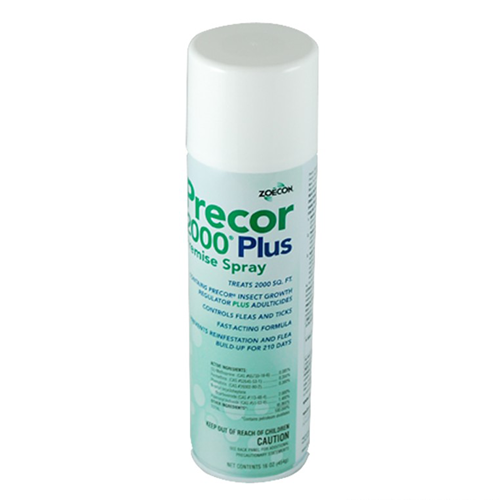

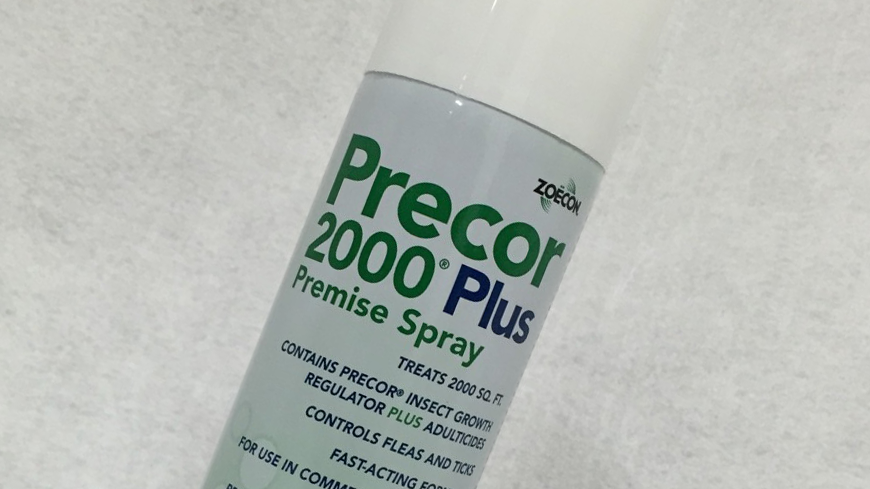
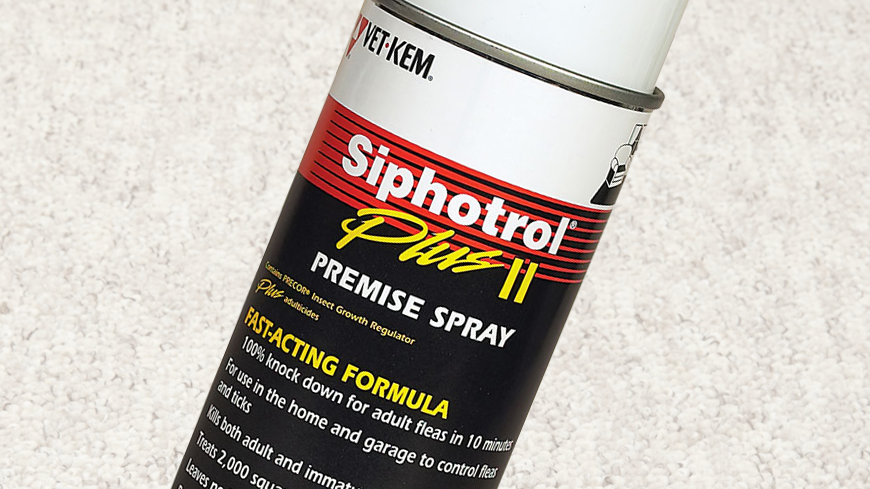


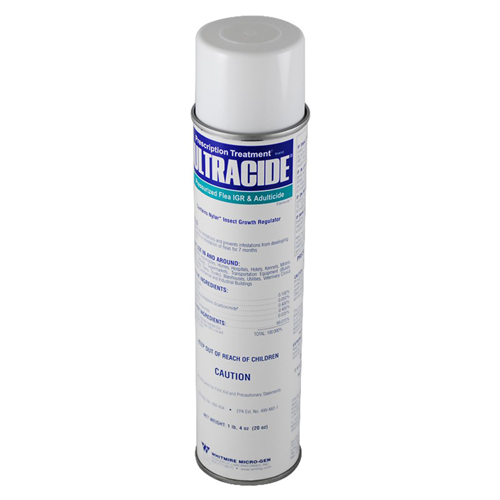
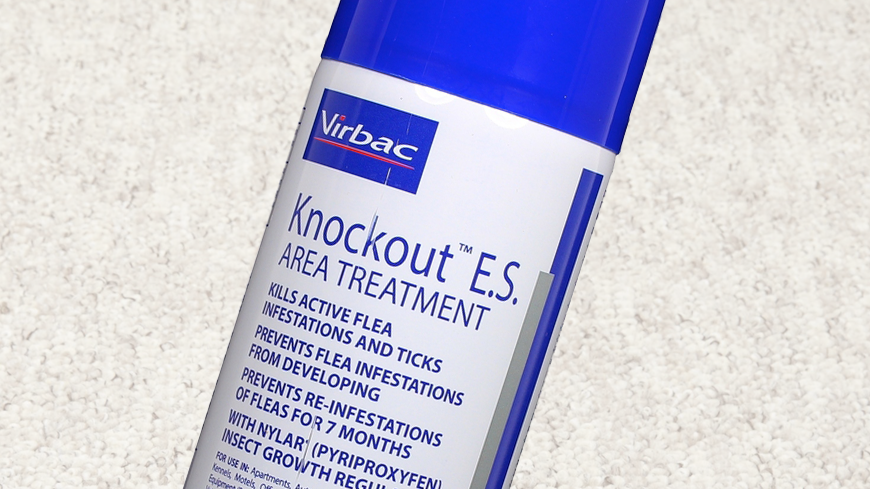
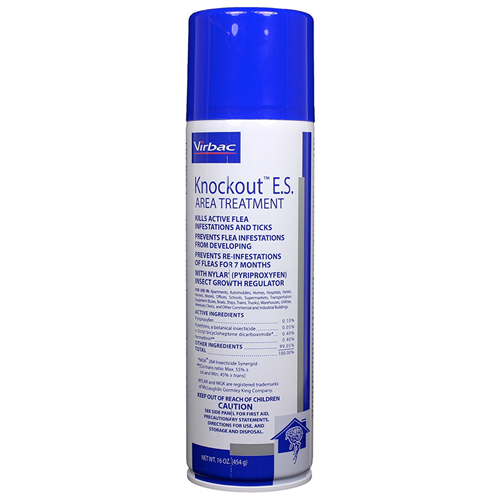


You must log in to post a comment. Log in now.